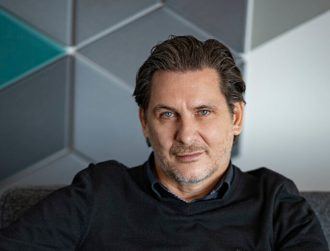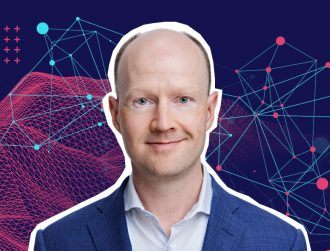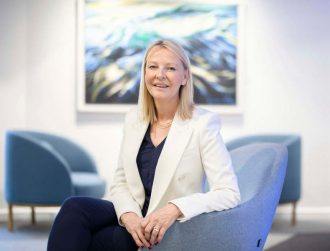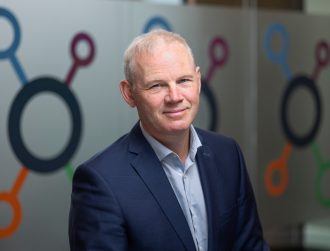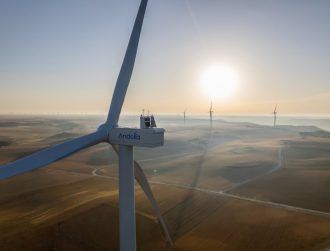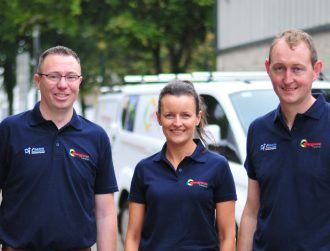
Sabine Erlinghagen. Image: Siemens
Dr Sabine Erlinghagen, CEO of Siemens Grid Software, discusses the ins and outs of the energy transition and why its vital in the fight against climate change.
Dr Sabine Erlinghagen is the CEO of Siemens Grid Software, which is a part of the multinational tech giant’s Smart Infrastructure business.
Siemens Grid Software’s objective is to enable power grid operators and infrastructure companies to “accelerate and secure” the renewable energy transition in a sustainable and profitable way.
“In essence, we build and sell software that helps distribution and transmission system operators to plan, operate and maintain their grid,” says Erlinghagen.
Erlinghagen’s own transition to this area began in 2010, when she decided to leave behind a successful career at Siemens IT Solutions in order to focus on her real interest: the energy sector and its transition. (For those who are interested in learning more about the energy industry, she recommends Blackout by Matthew Warren as an “essential read”.)
“I knew I wanted to go back to university to dive deep, but I had nothing lined up.”
Ultimately, the risk paid off, as she was accepted into a PhD programme at ETH Zürich, where she wrote her thesis on the transformation of the electricity sector towards a smarter grid.
Now, Erlinghagen is a major player in accelerating the energy transition.
‘We need to act now and create momentum to enable the energy transition to succeed’
Electrifying changes
Over the past few months, the topic of climate change and its negative effects has accelerated. Various initiatives and projects are being worked on to provide beneficial solutions and protections against the effects.
The importance of decarbonisation is more apparent than ever, which Erlinghagen says involves the electrification of everything from “heating to mobility and everything in between”.
However, with increased electricity demand, Erlinghagen says that we will need additional grid capacity.
“In fact, we expect that in some parts of the world we need to double the current grid capacity (which was built over the last 100 years) in the next seven [years].”
As well as this, Erlinghagen points out that the adoption of renewable energies also requires new strategies to keep the sector operational.
“No longer does energy flow in one direction, but with renewable energy, such as solar panels, it flows both ways,” she states. “This means the industry now needs to reconfigure quickly as the way we use energy in society shifts.”
One concept that Erlinghagen suggests to help onboard new strategies is the recruitment of people outside of the energy industry, who can help challenge the “status quo” of the industry’s decades-old methods and help them “come up with better solutions and generate new insights which we can all benefit from”.
The importance of speed
According to Erlinghagen, the biggest challenge of the energy transition is speed.
“We need to act now and create momentum to enable the energy transition to succeed.”
She stresses the importance of adopting the necessary infrastructure to cope with this challenge, along with the collaboration of the relevant stakeholders in the sector “to do what is needed, so that we don’t become the bottleneck for decarbonisation in time”.
Erlinghagen and her team believe software can play a crucial role to extend capacity fast.
“With increased oversight over the grid, you can ensure it is being used to its full capacity in the most flexible and transparent way. This can also tell you how the grid is being used and where it makes sense to put money into actual infrastructure investments.”
But what about the carbon footprint that tech itself emits?
Erlinghagen says that while energy infrastructure such as data centres do consume enormous amounts of electricity, the electricity itself is ultimately easier to decarbonise compared to processes that run on oil and gas.
“The transition to electrification or hydrogen is a much harder step to make. But ultimately, we need to save as much energy and electricity as we can, so if technology can support this, it’s a good thing.”
Powering on and off
Erlinghagen says that she gets the best out of her team through empowerment.
“It’s important to have a diverse team with different skillsets, ensuring everyone is set up for success. That means having the right person for the right job.”
She also works to ensure the presence of “great respect amongst the team”, and that everyone is able to learn from each other.
“When you foster a trustful environment,” she says, “it gives the team space to develop unusual, groundbreaking, disruptive ideas that together we can take forward and realise”.
The importance of a good team has been central to Erlinghagen’s career journey. “One of the best pieces of career advice I received is to surround yourself with smart people. I think this is how we continue to remain at the forefront of the industry and innovate.”
As for Erlinghagen’s personal strategy for maximum output, she says “enough sleep” is what gets her through the week.
10 things you need to know direct to your inbox every weekday. Sign up for the Daily Brief, Silicon Republic’s digest of essential sci-tech news.

